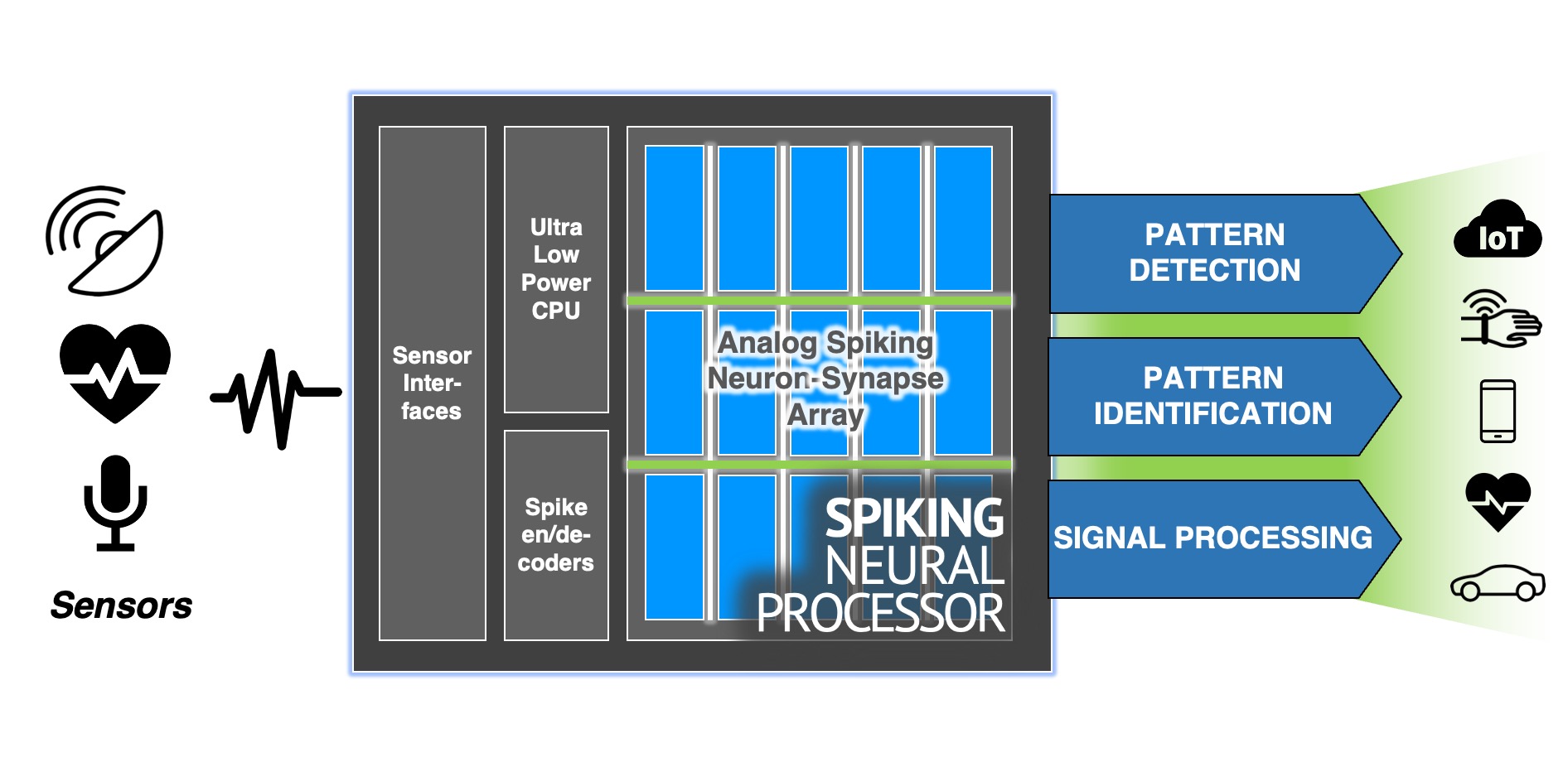 AI
AI
 AI
AI
 AI
AI
Netherlands-based microprocessor maker Innatera Nanosystems B.V. said it closed an oversubscribed $21 million Series A funding round, which included a $16 million investment the company announced in March and an additional $5 million from new investors.
The company’s Spiking Neural Processor T1, unveiled in January, is an energy-efficient artificial intelligence chip for sensor-edge applications. It incorporates a proprietary event-driven computing engine, a convolutional neural network accelerator and a RISC-V central processing unit (pictured) for running ultra-low-power AI applications on battery-powered devices.
Innatera, which was spun out of the Delft University of Technology in 2018, says it’s filling a gap in the market for AI-powered devices that require human-machine interaction. Its chip is “basically a brain-inspired processor that enables turnkey intelligence in applications where power is limited,” Chief Executive Officer Sumeet Kumar told SiliconANGLE in an interview. “It essentially allows you to analyze sensor data in real time by simulating how your brain recognizes patterns of interest.”
The company says the Spiking Neural Processor enables high-performance pattern recognition of images and spoken words at the sensor edge with submilliwatt power consumption and submillisecond latency. It claims its chips consume 500 times less energy and are 100 times faster than conventional microprocessors.
The analog-mixed signal neuromorphic architecture allows for the always-on operation needed in applications like security cameras and listening devices within a narrow power envelope. The processors can be used as a dedicated sensor-handling engine that allows functions such as conditioning, filtering and classification to be offloaded from a central processor or sent to the cloud.
“We tend not to focus on applications that require large format image processing,” Kumar said. “We are most useful when there is event data inside the data stream, or there is something temporal such as radar, low-resolution images, cameras and sensors.” A typical use case, he said, is a video doorbell that needs to be constantly awake but run on a rechargeable battery.
“It’s basically a neural network that understands time,” Kumar said. “By implementing this sort of computation using analog circuits and mimicking the brain’s algorithms for pattern recognition, we came up with a solution that is about 10,000 times more efficient at detecting patterns and sensor data compared to traditional microcontrollers.”
Similar to a field programmable gate array, he said, “it consists of computational elements whose connectivity and parameters can be programmed at runtime. It can flexibly implement any neural network that you can train on your desktop.”
As a microcontroller, the processor has no operating system, but Innatera has a software development kit and firmware that runs applications built in PyTorch, with support for additional AI frameworks planned. “You build a new training model in a familiar framework, and then once that model is trained, you can map it onto the chip without having to understand any of what goes on inside the chip,” Kumar said.
The processors, the result of six generations of silicon design, are expected to ship in limited volume by the end of the year and at full volume in 2025.
Innatera employs about 75 people today and built its first processors with less than $5 million of investment. “We’ve been tremendously capital-efficient,” Kumar said.
The company plans to use the funding to get its first product into large-scale production in 2025 and expand marketing and sales. A Series B funding round is planned within the next year.
The Series A extension was led by Innavest and Invest-NL N.V., who joined existing Series A investors, which included the European Commission’s EIC Fund, MIG Capital LLC, Matterwave Ventures Management GmbH and Delft Enterprises B.V.
Support our mission to keep content open and free by engaging with theCUBE community. Join theCUBE’s Alumni Trust Network, where technology leaders connect, share intelligence and create opportunities.
Founded by tech visionaries John Furrier and Dave Vellante, SiliconANGLE Media has built a dynamic ecosystem of industry-leading digital media brands that reach 15+ million elite tech professionals. Our new proprietary theCUBE AI Video Cloud is breaking ground in audience interaction, leveraging theCUBEai.com neural network to help technology companies make data-driven decisions and stay at the forefront of industry conversations.